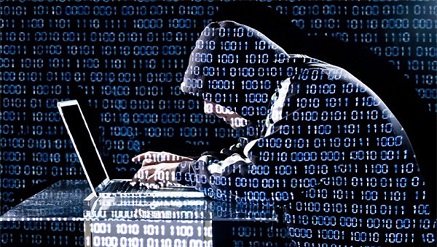E-Business
Ransomware: Microsoft Gives Details of Attack, Decries Govts’ Inaction

Microsoft has stressed the need for urgent collective action to keep people safe online, following the world’s biggest cyberattack at the weekend, sending countries into ‘disaster recovery mode.
In a blog post, ‘Lessons from last week’s cyberattack’, Brad Smith, president and chief legal officer at Microsoft, said the global tech giant takes every single cyberattack on a Windows system seriously.
Starting first in the United Kingdom and Spain, the malicious “WannaCrypt” software quickly spread globally, blocking customers from their data unless they paid a ransom using Bitcoin.
The WannaCrypt exploits used in the attack were drawn from the exploits stolen from the National Security Agency, or NSA, in the United States, Smith said. “That theft was publicly reported earlier this year. A month prior, on March 14, Microsoft had released a security update to patch this vulnerability and protect our customers. While this protected newer Windows systems and computers that had enabled Windows Update to apply this latest update, many computers remained unpatched globally. As a result, hospitals, businesses, governments, and computers at homes were affected.
“All of this provides the broadest example yet of so-called “ransomware,” which is only one type of cyberattack”.
He lamented that, unfortunately, consumers and business leaders have become familiar with terms like “zero day” and “phishing” that are part of the broad array of tools used to attack individuals and infrastructure.
“We take every single cyberattack on a Windows system seriously, and we’ve been working around the clock since Friday to help all our customers who have been affected by this incident. This included a decision to take additional steps to assist users with older systems that are no longer supported. Clearly, responding to this attack and helping those affected needs to be our most immediate priority.
“At the same time, it’s already apparent that there will be broader and important lessons from the ‘WannaCrypt’ attack we’ll need to consider to avoid these types of attacks in the future. I see three areas where this event provides an opportunity for Microsoft and the industry to improve.
“As a technology company, we at Microsoft have the first responsibility to address these issues. We increasingly are among the first responders to attacks on the internet. We have more than 3,500 security engineers at the company, and we’re working comprehensively to address cybersecurity threats.
“This includes new security functionality across our entire software platform, including constant updates to our Advanced Threat Protection service to detect and disrupt new cyberattacks. In this instance, this included the development and release of the patch in March, a prompt update on Friday to Windows Defender to detect the WannaCrypt attack, and work by our customer support personnel to help customers afflicted by the attack.
“But as this attack demonstrates, there is no cause for celebration. We’ll assess this attack, ask what lessons we can learn, and apply these to strengthen our capabilities. Working through our Microsoft Threat Intelligence Center (MSTIC) and Digital Crimes Unit, we’ll also share what we learn with law enforcement agencies, governments, and other customers around the world.
“Second, this attack demonstrates the degree to which cybersecurity has become a shared responsibility between tech companies and customers. The fact that so many computers remained vulnerable two months after the release of a patch illustrates this aspect.
“As cybercriminals become more sophisticated, there is simply no way for customers to protect themselves against threats unless they update their systems. Otherwise they’re literally fighting the problems of the present with tools from the past. This attack is a powerful reminder that information technology basics like keeping computers current and patched are a high responsibility for everyone, and it’s something every top executive should support.
“At the same time, we have a clear understanding of the complexity and diversity of today’s IT infrastructure, and how updates can be a formidable practical challenge for many customers. Today, we use robust testing and analytics to enable rapid updates into IT infrastructure, and we are dedicated to developing further steps to help ensure security updates are applied immediately to all IT environments.
“Finally, this attack provides yet another example of why the stockpiling of vulnerabilities by governments is such a problem. This is an emerging pattern in 2017. We have seen vulnerabilities stored by the CIA show up on WikiLeaks, and now this vulnerability stolen from the NSA has affected customers around the world.
“Repeatedly, exploits in the hands of governments have leaked into the public domain and caused widespread damage. An equivalent scenario with conventional weapons would be the U.S. military having some of its Tomahawk missiles stolen. And this most recent attack represents a completely unintended but disconcerting link between the two most serious forms of cybersecurity threats in the world today – nation-state action and organized criminal action”.
Smith noted that the governments of the world should treat the attack as a wake-up call. “They need to take a different approach and adhere in cyberspace to the same rules applied to weapons in the physical world. We need governments to consider the damage to civilians that comes from hoarding these vulnerabilities and the use of these exploits.
“This is one reason we called in February for a new ‘Digital Geneva Convention’ to govern these issues, including a new requirement for governments to report vulnerabilities to vendors, rather than stockpile, sell, or exploit them. And it’s why we’ve pledged our support for defending every customer everywhere in the face of cyberattacks, regardless of their nationality. This weekend, whether it’s in London, New York, Moscow, Delhi, Sao Paulo, or Beijing, we’re putting this principle into action and working with customers around the world.
“We should take from this recent attack a renewed determination for more urgent collective action. We need the tech sector, customers, and governments to work together to protect against cybersecurity attacks. More action is needed, and it’s needed now. In this sense, the WannaCrypt attack is a wake-up call for all of us. We recognize our responsibility to help answer this call, and Microsoft is committed to doing its part”.
Brad Smith is Microsoft’s president and chief legal officer. Smith plays a key role in representing the company externally and in leading the company’s work on a number of critical issues including privacy, security, accessibility, environmental sustainability and digital inclusion, among others.
E-Business
Olatunji, NDPC Boss Calls for Integrated Strategy on Data Privacy, Cyber-Security

Dr Vincent Olatunji, national commissioner, Nigerian Data Protection Commission (NDPC), has emphasized that data privacy, protection, and cybersecurity are “inseparable pillars of the digital age” and must be prioritized in Nigeria’s digital transformation journey.

Dr Vincent Olatunji, national commissioner, NDPC
Dr. Olatunji made this assertion during his keynote address titled “Data Privacy and Protection: Nigeria’s Roadmap to Compliance” at the ongoing National Cybersecurity Conference in Abuja.
He underscored that while data protection focuses on safeguarding personal information from misuse, cybersecurity protects the systems that store this data. “Data privacy is a basic human right that empowers individuals to control how their personal information is collected, used, and shared,” he said.
“Strong cybersecurity is essential to maintain the confidentiality, integrity, and availability of personal data. Conversely, robust data protection frameworks help guide effective cybersecurity practices and foster a culture of privacy.”
Highlighting Nigeria’s progress, Dr. Olatunji noted the country’s recent Tier 3 (“establishing”) ranking in the 2024 Global Cybersecurity Index and its top position in Africa particularly in the area of data protection. He traced the evolution of Nigeria’s data protection journey, culminating in the signing of the Nigeria Data Protection Act (NDP Act) 2023 by President Bola Ahmed Tinubu (GCFR).
He described the NDP Act as the cornerstone of the country’s data governance framework. “The Act regulates the processing of personal data in Nigeria and guarantees the privacy rights of individuals,” he explained.
It applies to both local and international data controllers and processors handling data of Nigerian subjects and provides clear guidelines on data collection, storage, consent, data subject rights, and penalties for non-compliance.
Dr. Olatunji cited the recent ₦766.2 million fine imposed on MultiChoice for non-compliance as an example of the Commission’s enforcement capacity. He also revealed that the NDPC has generated over ₦2 billion in the last two years, with the data protection sector now valued at ₦16.2 billion alongside the creation of numerous job opportunities.
He further highlighted ecosystem growth, citing the certification of 455 Data Protection Officers (DPOs) under the National Certification Program and verification of 3,343 Data Protection Compliance Organizations (DPCOs) by 2025.
While celebrating progress, Dr. Olatunji also pointed to key areas for improvement, including building institutional capacity, enhancing data literacy and workforce development, and strengthening collaboration across sectors.
In conclusion, he urged stakeholders to “embrace a culture of data protection, implement robust cybersecurity practices, and stay attuned to the evolving regulatory landscape” in order to reduce risks, protect assets, and support long-term national growth.
E-Business
Kaspersky Experts Warn of the Risks Hidden Behind QR Codes

In today’s digital world, QR codes are placed on almost everything – from yogurt containers and restaurant menus to museum exhibits, and even utility bills and parking lots.

People use them to open websites, download apps, collect loyalty programme points, make payments and transfer money, and even for charity donations. The accessible and practical technology is convenient for many, including cybercriminals, who have already rolled out a variety of QR-based schemes.
Kaspersky experts have identified the top security risks when scanning QR codes:
- Phishing and redirection to malicious sites: QR codes can direct users to fraudulent websites designed to steal personal or financial information, such as passwords and credit card numbers. Attackers can impersonate legitimate sites, such as banks or streaming services, and trick users into entering their credentials.
- Malware download: Some QR codes can trigger the download of malicious applications that compromise the security of the user’s device, especially if it is not protected against unauthorised installation.
- Payment fraud: During special events or sales periods like holiday sales, a fake QR code can redirect users to make payments to fraudulent accounts.
- Unsafe automatic connections: A QR code can also automatically connect the user to Wi-Fi networks controlled by cyber attackers, allowing them to intercept their communications.
“QR codes are a fertile ground for potential manipulation, especially as they appear in various everyday contexts such as receipts, flyers, and signage. Attackers have nearly endless possibilities to exploit them.
“As these codes have already become an integral part of our daily lives, it is essential for users to know how to use them safely and responsibly,” says Seifallah Jedidi, Head of Consumer Channel for META at Kaspersky.
In order to not fall for a scam when scanning a QR code, Kaspersky experts recommend:
- Verify the source: Scan QR codes only from trusted and known sources. Avoid scanning codes in public places that may have been tampered with.
- Check the URL: If you really need to scan a publicly available code, verify that the web address it directed you to is legitimate before taking any action on this website.
- Don’t share personal information: Avoid entering sensitive information if you’re not completely sure of the origin of the QR code.
- Protect your digital life: Install a cybersecurity solution with anti-phishing and anti-fraud protection, such as Kaspersky Premium, on all your devices; it will alert you to any danger timely.
E-Business
Firm Highlights Top Risks of Quantum Computing

Kaspersky is addressing one of the most debatable technological challenges of the coming decade: the rise of quantum computing and its potential impact on digital security.

In this context, experts have identified the main quantum threats that demand immediate action from the cybersecurity community.
As classical computers approach their physical limits, their performance growth is slowing — constraining progress in areas that depend on complex computation.
At the same time, quantum computers offer the potential to solve specific problems far faster than classical systems. For now, however, their practical use remains limited to narrow and experimental domains.
Nevertheless, experts estimate that we may see a fully fault-tolerant quantum computer within the next decade — a development that could unlock significant advances, but also unleash a new era of cybersecurity threats.
Supporting this urgency, Deloitte’s 2024 Global Future of Cyber Survey reports that 83% of organizations are already assessing or taking steps to address quantum computing risks, demonstrating growing awareness and proactive strategies in the private sector.
To better understand the scope of the evolving threat, Kaspersky has identified three of the most urgent quantum-related risks that demand action from the cybersecurity community:
The top three risks:
Quantum computers could be used to compromise the traditional encryption methods that currently protect data in countless digital systems — posing a direct threat to global cybersecurity infrastructures.
Threats include the interception and decoding of sensitive diplomatic, military, and financial communications, as well as the real-time decryption of private negotiations – something quantum systems could handle much faster than classical machines, turning secure conversations into open books.
- Store now, decrypt later: the key threat of the coming years
Threat actors are already harvesting encrypted data today, with the intention of decrypting it in the future once quantum capabilities advance. This “store now, decrypt later” tactic could expose sensitive information years after it was originally transmitted — including diplomatic exchanges, financial transactions, and private communications.
- Sabotage in blockchain and cryptocurrency
Blockchain networks are not immune to quantum threats. Bitcoin’s Elliptic Curve Digital Signature Algorithm (ECDSA), which relies on elliptic curve cryptography (ECC), is especially vulnerable.
Potential risks include forging digital signatures, which threatens Bitcoin, Ethereum, and other cryptocurrencies; attacks on ECDSA that secure crypto wallets; and tampering with blockchain transaction history, undermining trust and integrity.
- Quantum-resistant ransomware: a new front
Looking ahead, developers and operators of advanced ransomware may begin adopting post-quantum cryptography to protect their own malicious payloads. So-called “quantum-resistant” ransomware would be designed to resist decryption by both classical and quantum computers — potentially making recovery without paying a ransom nearly impossible.
At present, quantum computing does not offer a way to decrypt files locked by current ransomware. Data protection and recovery still rely on traditional security solutions and collaboration among law enforcement agencies, quantum researchers, and international organisations.
Building quantum-safe defenses
Quantum computers are not yet a direct threat — but by the time they are, it may be too late to respond. Transitioning to post-quantum cryptography will take years. Preparations must begin today.
The cybersecurity community, IT companies, and governments must coordinate to address the risks ahead. Policymakers should develop clear strategies to migrate to post-quantum algorithms. Businesses and researchers need to begin implementing new security standards now.
“The most critical risk lies not really in the future, but in the present: encrypted data with long-term value is already at risk from future decryption. The security decisions we make today will define the resilience of our digital infrastructure for decades.
“Governments, businesses, and infrastructure providers must begin adapting now, or risk systemic vulnerabilities that cannot be retroactively fixed,” states Sergey Lozhkin, Head of Kaspersky Global Research & Analysis Team for META and APAC.

 Broadcasting3 days ago
Broadcasting3 days agoNigeria Week Ahead: Inflation, Oil and Naira in focus

 News3 days ago
News3 days agoEFCC: Accusations Against Our Chairman Are Baseless and Misleading

 Telecom2 days ago
Telecom2 days agoNCC Introduces N10m Licence Fee for Bulk SMS Service

 Telecom2 days ago
Telecom2 days agoMTN Nigeria Targets $1Bn Cloud Market with Largest Modular Data Centre

 General News2 days ago
General News2 days agoWoodhall Capital and Partners Launch ₦1.5Bn Fund

 E-Business2 days ago
E-Business2 days agoFirm Highlights Top Risks of Quantum Computing

 General News2 days ago
General News2 days agoBurna Boy Distances Himself from Meme Coin, Labels Crypto as Fraud

 Telecom2 days ago
Telecom2 days agoPAT Taps Osi as CEO















